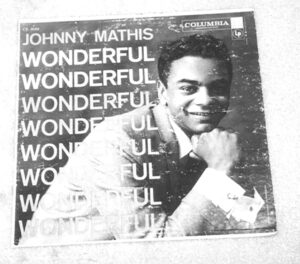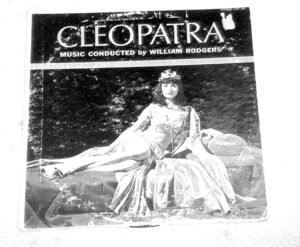 By Maureen Timm
By Maureen Timm The ’50s and ’60s were the heydays of Rock and Roll, Rhythm and Blues, Rockabilly and Blues music. Those were the days of male and female bonding activities of that generation, the practical jokes, ball-playing, drag racing, the candy store or malt shop hangout, the clique-ishness, the insecurities, the pool halls and bowling alleys, the poker games, and the first feelings of romance.
The first records were cylinders produced by Thomas Edison in 1877 and played on a phonograph of his design. Edison received a patent in 1878, but soon dropped the project in order to perfect the light bulb.
Alexander Graham Bell, Edison’s friend, was excited about the phonograph and developed the graphaphone, which was marketed successfully by 1889. Early phonographs and graphaphones had hand cranks which wound the mechanism and kept the cylinders moving.
About 1900 Emile Berliner developed a phonograph which used a flat disc, similar to today’s records. The United States Gramophone Company marketed his design in 1901. The company eventually became RCA Victor. By 1910 discs were more popular than cylinders.
The record industry continued to develop as progress was made in the preservation of sound and the increased quality of sound. The initial size of 78 rpm records was replaced by 45 rpm, then 33-1/3 rpm, and finally compact discs.
 Record collecting has undergone many changes over the decades. Prior to 1935, most record collectors favored classical and operatic records. In the 1930s and 1940s, jazz and blues records (particularly blues records with jazz accompaniments) became the primary area of interest.
Record collecting has undergone many changes over the decades. Prior to 1935, most record collectors favored classical and operatic records. In the 1930s and 1940s, jazz and blues records (particularly blues records with jazz accompaniments) became the primary area of interest. It seems the most active category of record collecting is the music of the 1950s and ’60s, including Rock and Roll, Rhythm and Blues, Rockabilly and Blues. In the early 1960s, Rhythm and Blues records, particularly vocal groups, were already being collected seriously.
Certain artists such as Elvis Presley, The Beatles, The Beach Boys and The Four Seasons, have great popularity with collectors. Sometimes the jacket of an album is more important than the record. Picture sleeves can be worth more than the subject, and can sell for high prices.
Advances in technology do not necessarily affect the market for vintage records. According to some, as CDs supplant LPs, collectors are anxious to buy up LPs. However, each record will be regarded as collectible according to its recorded content, not the obsolescence of its technology.
There are plenty of the thick Edison discs, discontinued in 1929, that can be bought for as little as two or three dollars when lacking the musical content that makes a record collectible. There are millions of “junk” 78s around, and there will be millions of junk LPs for many years to come.
Playing 78 rpm Records
You can use an old wind-up player, such as those on which early 78s were originally played. However, your records will be slightly damaged when the nail-like needle negotiates the grooves.
For those wanting better sound and longer life for their records, an old schoolroom record player may be found at flea markets. Many of these have 78 rpm speed.
Playing Edison Records
Edison records (the quarter-inch thick ones) were recorded by a different process than ordinary 78s (“vertically,” rather than “laterally”). These should not be played on an ordinary wind-up player as the record will be damaged. Proper playing on high fidelity or stereo players is accomplished with the use of special needles (styli), and specially “strapped” cartridges.
Advertising Records
Postcard records were introduced in the early 1920s, and in 1960 a “Souvenir Postcard Record of Hawaii” was made. This was a delightful travelogue recording about this world-famous scenic area. Days filled with sunshine, romance, palms swaying in the breeze and hula dancers on the beach.
The Mickey Mouse Wheaties record was introduced in 1952. The backing of the record is the cardboard cereal box, which is also where the “label” and stylized “grooves” are printed. Eight Disney records and eight folk songs were made and are worth collecting.
A Blotter record was made in the early 1920s by Albermale Paper Manufacturing Company of Richmond, Va. After playing the record one was instructed to detach disc and use the blotter as needed.
Many advertising records were made, including records made by Durium Corporation advertising Chevrolet and Wrigley’s gum.
Where to Buy, Sell or Trade Records
Every record collector, whether novice or veteran, obtains at least some of his discs by “junking” (visiting flea markets, garage sales and second-hand stores). There is always the possibility of that great find: King Oliver on Gennett; Charlie Spand on Paramount; Hank Williams on Sterling, Elvis Presley on Sun; or maybe a whole box of goodies.
Some leading record publications are highly regarded for selling, buying and trading records. Once you are familiar with the appropriate publications, you might consider advertising your wants as well as contacting other advertisers, particularly those who invite “want lists.”
Record collectors’ conventions are popular in large metropolitan areas. The publications usually contain a number of advertisements and notices about upcoming conventions.
Valuation of Records
An Edison (special) record pressed for Edison dealers, Christmas season 1924, features the voice of Thomas Edison, excellent condition in original sleeve, $100 or more.
Maybell Anderson; Moanful Wailin’ Blues, Supertone 9429, may sell for $200.
Alabama Fuzzy Wuzzies, Congo Stomp, Ch 15415, may sell for $260.
Charlie Adams; Pistol Packin’ Mama, Co 21445, 45 rpm, may sell for $8
Most estimations are stated as a range, e.g. $10 to $15, rather than a specific figure. This method of pricing recognizes the partial validity of the widely held contention that it is impossible at this time, given the fluctuations in market value, to assign definite values to records
Care of Records
Proper storage of records is critical to maintaining their value. Keep stacks small. It is best to store them vertically. Place acid free paper between the albums to prevent bleeding of ink from one cover to the next.
The fabulous music produced over the centuries will remain in our hearts and lives for years to come.
Periodicals
Goldmine Magazine, published by Krause, is available throughout North America and most used record and CD stores as well as Tower Records, Virgin Megastores, Barnes And Nobles, Borders, NRM, Blockbuster Music, and many other locations.
Goldmine Magazine is the world’s largest marketplace for collectible records, CDs and memorabilia.















Follow Us